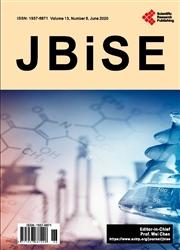First Evaluation of Zygomaticus Major Muscle Elastic Properties Using a US Elastography Technique
引用次数: 4
Abstract
Facial expressions are linked to movements of muscles, which can be altered by pathological diseases. Assessment of facial muscle deficits is subjective (palpation) and operator-dependent, and these deficits are currently estimated with clinical scales. Thus, the quantification of facial muscle elastic properties is a key for the clinical adaption and evaluation of treatments for facial paralysis. We herein present a novel application of shear wave elastography (SWE) based on an ultrasound protocol to assess the morphological (thickness and texture) and elastic (Young’s modulus) properties of the zygomaticus major (ZM) muscle. Fifteen healthy volunteers underwent SWE tests, and the ultrasound acquisitions were obtained using a new linear transducer (SLH20-6, spatial resolution: 38 μm) and compared to those obtained using an SL10-2 probe (spatial resolution: 50 μm). The probe position was placed along the muscle fiber orientation. A semi-automatic method was developed to quantify the ZM muscle elasticity, and the repeatability was analyzed at one-week intervals. The mean elasticity for the two probes was about 15 kPa. The SLH20-6 probe yielded a higher mean elasticity (approximately 6 kPa) and less homogeneous echogenicity than the SL10-2 probe. Two distinct groups of texture profiles as a function of the transducer were obtained. This study will provide some guidance for clinical practices and will allow the construction of a reference database that could be used to evaluate treatments and develop numerical models of facial expression.应用US弹性成像技术首次评估颧骨大肌弹性特性
面部表情与肌肉的运动有关,而肌肉的运动可能会因病理性疾病而改变。面部肌肉缺损的评估是主观的(触诊)和依赖于操作者的,目前这些缺损是用临床量表估计的。因此,面部肌肉弹性特性的量化是临床适应和评估面瘫治疗的关键。本文提出了一种基于超声协议的剪切波弹性成像(SWE)的新应用,以评估颧骨大肌(ZM)的形态(厚度和质地)和弹性(杨氏模量)特性。15名健康志愿者接受了SWE测试,使用新的线性换能器(SLH20-6,空间分辨率:38μm)获得超声采集,并与使用SL10-2探针(空间分辨率:50μm)获取的超声采集进行比较。探针的位置是沿着肌肉纤维的方向放置的。开发了一种半自动方法来量化ZM肌肉弹性,并每隔一周分析其重复性。两个探针的平均弹性为约15kPa。与SL10-2探头相比,SLH20-6探头产生了更高的平均弹性(约6kPa)和更低的均匀回声。获得了作为换能器函数的两组不同的纹理轮廓。这项研究将为临床实践提供一些指导,并将允许建立一个参考数据库,用于评估治疗方法和开发面部表情的数字模型。
本文章由计算机程序翻译,如有差异,请以英文原文为准。
求助全文
约1分钟内获得全文
求助全文

 求助内容:
求助内容: 应助结果提醒方式:
应助结果提醒方式:


